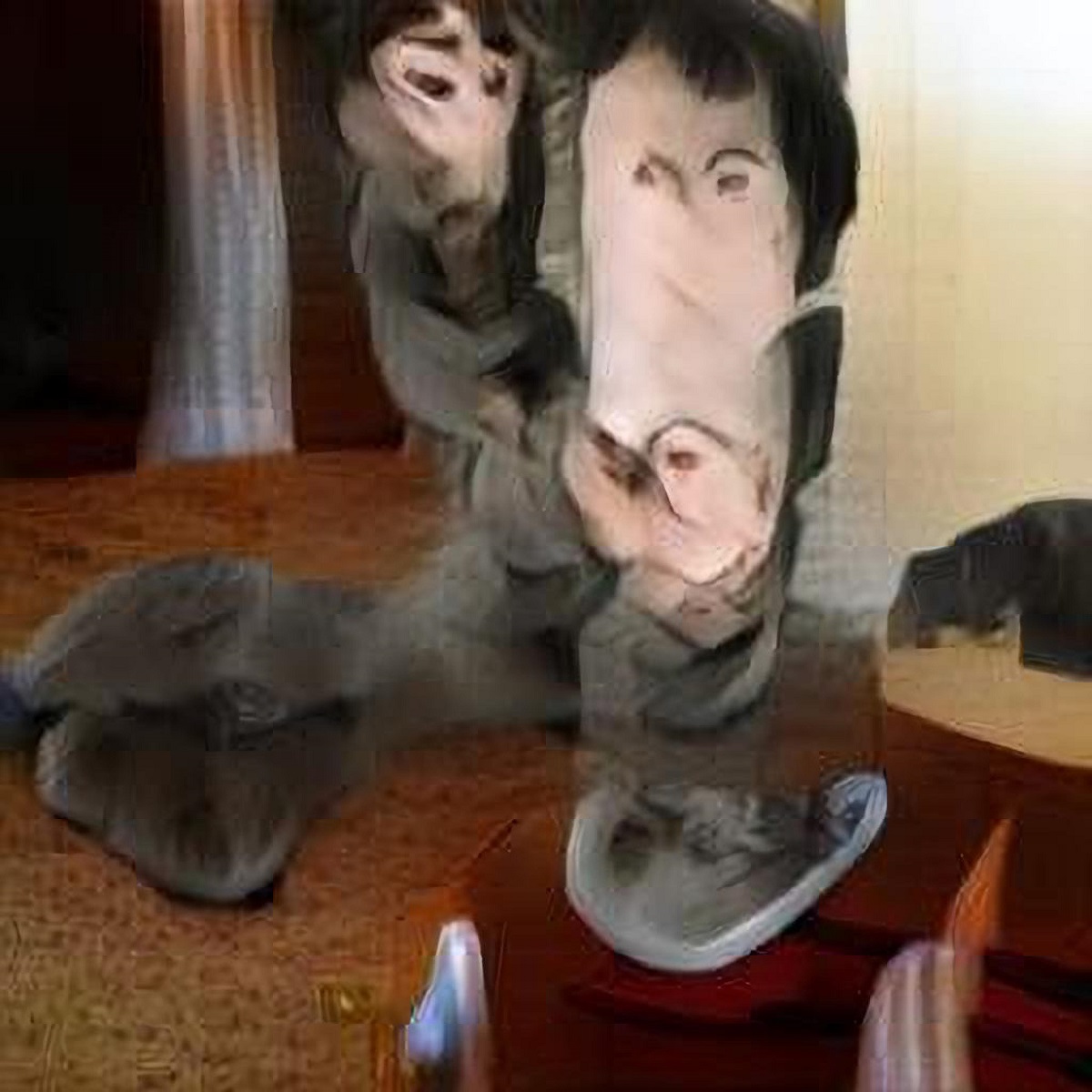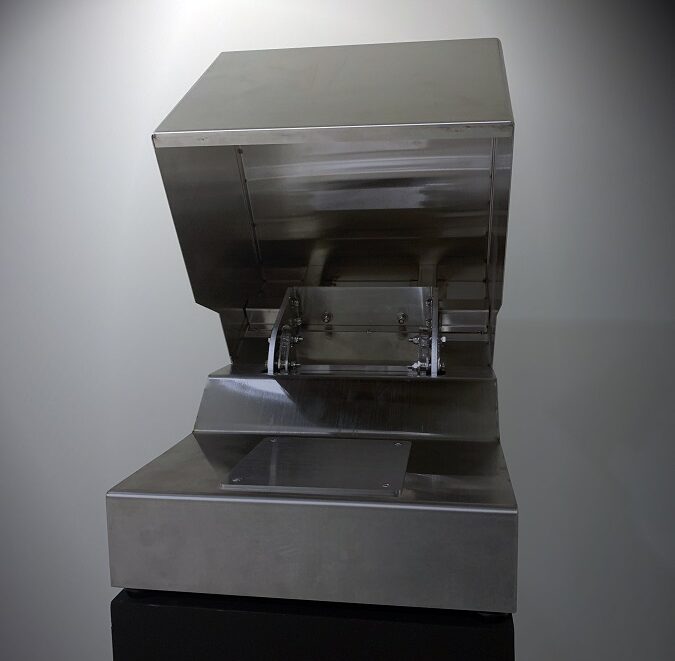藝術家鄭先喻長期關注當代科技、人類行為與人機依存矛盾狀態,作品多以規格精巧但卻充斥資訊滲透性的方式進行,創作過程中,他經常藉由大眾在生活裡常用的科技媒介作為素材,進而討論與科技有關的議題。今年6月,C-LAB通信分隊展演空間展出鄭先喻個展「同化者」,展覽名稱沿用鄭先喻過往慣於將某種現象以擬人方式命名的方向,以「同化者」描述此次作品所欲提出的問題,即「在人與機器進展到彼此相輔相成,甚至人逐漸被機器制約的年代裡,人與工具之間的關係。」
此次個展的作品方向與網路傳播相關,鄭先喻表示在新興社會科技或傳播活動中,科技除了便利性之外,亦會帶給人們某種焦慮的負面影響。他談到:「網路最初應用在國家軍事與政治用途,直至後來個人電腦的發展、滑鼠介面的發明而連結到一般人的生活範圍。網路也從最初的傳輸需求,發展到更複雜的社交、傳播功能,而在進入5G與衛星網路的階段,訊息傳輸即將到達零延滯的時代。對我而言,在這個狀態下原本應是開放性的互聯網(internet),卻會因為這樣的使用模式又回到另一種封閉的內聯網(intranet),在網紅或新的傳播媒介下,我們會發現每個地區的人們,共同的意識形態成分會愈來愈高,資訊環境會愈趨單一化或制服化。」於此,鄭先喻藉由「同化」一詞凸顯這樣零延滯網路時代下被規格化的環境及社會關係。

本次展出的主要作品《Hijacker:{,}》延伸自鄭先喻2010年碩二時與荷蘭UMCG醫學中心(University of Medical Center Groningen)合作的早產兒腦波觀測計畫,「後來因為常去醫院,自己也開始想像如果把腦的狀態用不同方式呈現會是怎樣的結果?但是腦電波圖本身光是感測器的配法、傳導波形就有很多種組合與閱讀方式,為了這個作品我做很多研究,因為資料量龐大,當時還無法完成這件作品,但現在因為AI助理與資料處理系統才讓這個過程變得相對容易。」
《Hijacker:{,}》分為兩區,一是展示裝備和系統,另一區則由電腦資料合成的情境語句、鄭先喻的睡眠夢境紀錄、圖片等三個面向進行比較。鄭先喻說明:「我先記錄下我平常看物件時的腦部波形,再去比對自己睡眠時快速動眼期的波形和夢境內容,接著運用Coco API的數據資料、網路上的關鍵字圖片進行亂數構圖,用類似相機的概念將夢轉化為圖像。」他表示:「這次作品的很多部分在討論『想像力』,一直以來我們都是聽別人形容他們的夢,再用我們自己的想像力去勾勒對方腦中的東西,《Hijacker:{,}》則是用工具去處理這個過程,以第三方的角度去創造夢境場景。」
 鄭先喻,《Discharge what you charged》,2019。圖/鄭先喻提供
鄭先喻,《Discharge what you charged》,2019。圖/鄭先喻提供
展覽場地的前身原為軍事基地,作品《Discharge what you charged》也巧妙地呼應「進軍營手機要收起來」的動作,一旦觀眾隨著作品的指示將手機放入裝置內,平台便會蓋上蓋子,讓手機在裝置中放電直至電力耗盡方能取出。隨著人們每日停留在手機上的時間愈來愈長,這件裝置企圖用強制或邀請的方式使觀眾在看展期間與手機分離。而這伴隨著因無法全然控制科技所帶來的焦慮感,也反映在《Invitation》與《What’s in the middle》兩組作品中。前者是鄭先喻2016年在阿根廷駐村時所發展出的作品,當時他以病毒套件的方式,將惡意軟體藏匿於展覽PDF邀請卡中,一旦開啟邀卡其用戶的瀏覽器就會被綁架,並且不定期在螢幕中產生「感染畫面」(即作品)直到展期結束;而在此次個展中,鄭先喻也再製了新版本,觀眾可將病毒邀卡發送給自己或別人。《What’s in the middle》則透過網卡監聽展場附近所有無線網路的封包,再藉由解碼(decode)網路封包,將其網域使用足跡以「中間人攻擊」(man-in-the-middle attack)的方式顯示為抽象圖像。
上述作品看似以略帶惡作劇、強制互動的方式,將科技發展所衍生的焦慮轉為可視的形象。而在複合媒材裝置《Portrait2020_2011re-edition》中,則集結了鄭先喻2010年至今的系列作品。這座由多件作品拼組出來的機械人將會感測空間中的觀眾動作,當場內空無一人時機器人頭便會低頭哭泣。藉由「在你背後哭泣」(crying behind your back)的動作,也進一步回應對於人工智慧機器人是否具有情緒感知的相關探問。
在當代社會對全球化資訊發展、人文與科技存在焦慮的議題討論下,2019年洪建全基金會第二屆「銅鐘藝術賞」將百萬獎金頒予鄭先喻,基金會創意總監張淑征表示:「我們想藉由藝術的眼光進入到對科技的討論,而鄭先喻一直以來與生活息息相關的作品,便是進入到我們之前無法想像的範圍,藉由他的計畫,我們可以開始建立一種態度去談這種無所不在,也無可抗拒的科技議題。」而科技議題所具備的多面向性、實驗性和跨域性,也與C-LAB文化創新生態系的精神相呼應,繼而促成這檔展覽的誕生。透過「同化者」一展看見人機互動中的矛盾與衝突,反思人的科技焦慮的同時,場域的空間特殊性或許能引出另一層思考與對話的可能。